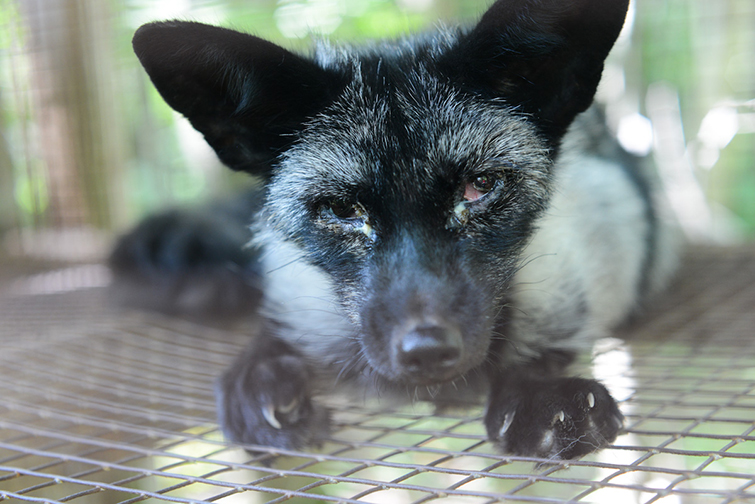
“The industry has got its act together and offers much more information, which is demonstrating that we have very high standards, probably greater than most other animal industries, particular meat and leather, because we are so aware of past criticism,” Frank Zilberkweit, owner of The Polar Group told The Telegraph.
It’s one of those statements that makes us open our mouths to respond, stop, scratch our heads, and mostly say, “Huh?”
Zilberkweit is talking about the ‘fur is green’ propaganda the industry has been spinning in recent years. It’s ludicrous. Not only does it ignore the inherent cruelty of keeping intelligent animals in tiny cages until they’re slaughtered so their pelt – and their pelt alone – can be sold for fashion, but it ignores the currently available science.
Here are a few highlights for the “younger generation” to consider when looking at “ethical” fur:
- For every kilogram of factory farmed fur produced, 563 kilograms of feed is required and the amount of manure created exceeds 225 kilograms
- For each kilogram of factory farmed fur produced, 110 kilograms of carbon dioxide is produced
- Acadia Centre for Estuarine Research: “The lakes exhibiting the most serious symptoms of nutrient over-enrichment were located within the upper region of the study area and in close proximity to a high concentration of mink farming operations, the activities of which are most likely to be the major source of nutrients leading to nutrient over-enrichment of the lakes.”
- David Suzuki Foundation: “Assuming a conservative estimate that 70 per cent of industry growth occurred in the Wentworth-Carleton River watershed, approximately 18,200 tonnes of manure will be produced annually by the mink. This will include 455 tonnes of phosphorus and 910 tonnes of nitrogen from the manure as well as 16,380,000 liters of urine annually that can affect surface and groundwater in the watershed area. This does not take into account any phosphorus or nitrogen produced from waste feed or chemical agents used in the farming process. It should also be noted that it is impossible to quantify the proportion of urine that is immediately absorbed in the soil.”
- CE Delft: “Compared with textiles, fur has a higher impact per kg in 17 of the 18 environmental categories, including climate change, eutrophication and toxic emissions. In many cases, fur has impacts that are a factor 2 to 28 higher than textiles, even when lower-bound values are taken for various links in the production chain.”
The science is clear: fur is not green.
And if you’re still not convinced that “ethical” fur is a ruse of the industry, see what it’s like inside of one of Canada’s fur farms – where we supposedly have the highest standards.
Even more than the science, the truth is crystal clear: fur is not humane, it is not green and it certainly is not ethical.
Photo by Jo-Anne McArthur/Montreal SPCA

